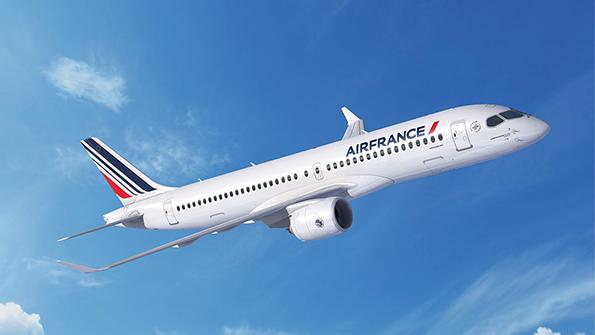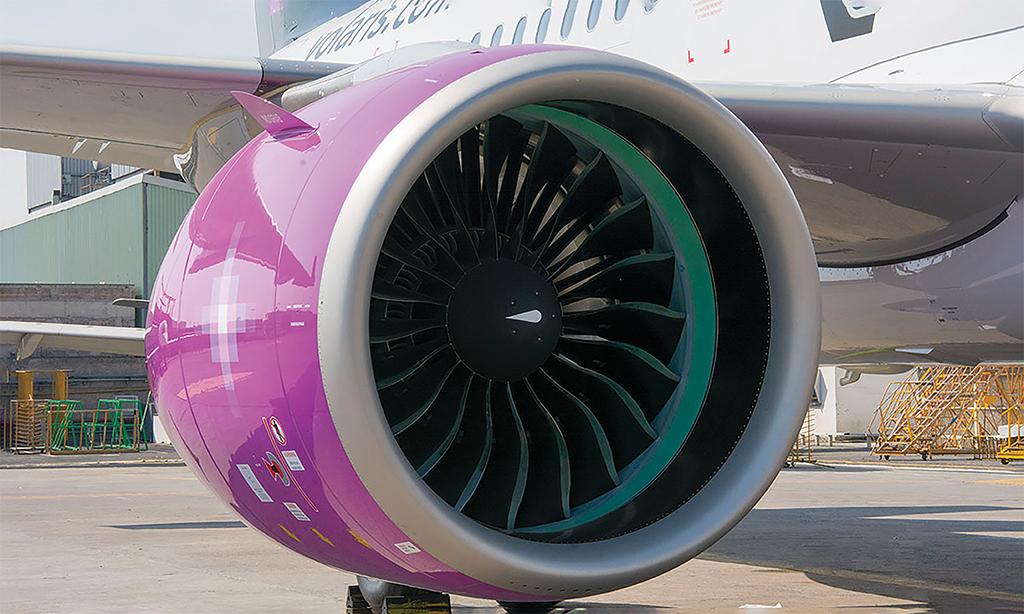
Bolstered by a spate of geared turbofan orders and near to completing a series of key retrofits, Pratt & Whitney says it is poised to take advantage of the single-aisle airliner rebound that is widely forecast to lead the post-COVID-19 pandemic aviation market recovery.
Although the engine-maker’s overall maintenance, repair and overhaul (MRO) revenues have been particularly affected by the downturn, the company has made the most of slack demand to implement specific improvements to the PW1000G family. “We’ve been able to really take this time to upgrade the configuration of that engine,” says Rick Deurloo, Pratt & Whitney chief commercial officer. “Our MRO output was really a big focus in 2020, and so it’s positioned us as we exit this crisis.”
- Airbus A320neo engine retrofit completion nears
- Engine-maker is optimistic about market recovery in the second half of 2021
In line with other forecasts that predict passenger recovery will be led by the single-aisle, short-to-medium-haul passenger market, Deurloo says: “Like most airlines and OEMs around the world, we’re cautiously optimistic that in the second half of this year we’ll start to see that traffic come back and stick—not just come back and then go away again. This summer we think the traffic will come back to some degree, and we’ll be able to hold it and grow it from there.”
Part of the company’s belief is based on its position on what Deurloo describes as “the right-size airplane” whether that’s the PW1100G-powered Airbus A320neo, PW1500G-powered A220 or PW1700G/1900G-powered Embraer E-Jet E2 family.
“The general belief is there are three markets that’ll probably come back,” Deurloo says. “The fastest is likely to be the low-cost market because of leisure, the narrowbody because of the size and domestic. That’s our sweet spot, and we’ve seen the [geared turbofan (GTF)] come back first. At the end of 2020, GTF utilization was back to roughly 95% of pre-COVID levels. GTF-powered aircraft were amongst the last airplanes to go down, but if it went down then, it was also the first airplane to come back up.”
For its biggest GTF program, the PW1100G, Pratt has now almost completed a fleet-wide retrofit of two components that have plagued the engine’s reliability: the low-pressure turbine (LPT) and the accessory gearbox. More than 90% of the engines have now been reconfigured with the revised LPT, which incorporates a material change in the third stage, while over 98% of the PW1100G accessory gearboxes have been replaced.
A high-profile priority included completing retrofits for the A320neos at Indian airlines IndiGo and GoAir. “We were able to do a lot of quick turns on their LPT and get that fleet completely retrofitted in 2020, which is an important milestone for us,” Deurloo says.
Pratt meanwhile continues to develop a fix for a problem on the PW1500G version powering the A220. Mechanical issues leading to uncontained failures were unearthed on the low-pressure compressor Stage 1 integrally bladed rotor following a series of inflight shutdowns at Swiss International Airlines and AirBaltic. In early 2020, the FAA fast-tracked a mandatory software upgrade developed by Pratt to mitigate the issue by rescheduling the variable inlet guide vanes.
For the longer term, however, Pratt has also used the downturn to perform a full root-cause analysis of the LPT failure, Deurloo says. “We have to do the program right—we will have to go out and flight-test—so that’s coming at a later time.”
Despite these issues, Pratt has maintained deliveries to Airbus of compliant engines for both the A320neo and A220 programs, which is providing valuable revenue during a difficult period. On the A320neo, for which it competes against CFM’s Leap 1A, “we feel really good that we’re right around 48% delivery share—that’s most important to us,” Deurloo says, referring to cumulative deliveries since the handover of the initial GTF-powered A320neo to Lufthansa in January 2016. “We think that’s an important metric because, ultimately, in order to generate revenue and earnings, we have to have customers,” he adds.

In terms of the orderbook, Pratt has around a 43% share compared to CFM. However, the company is optimistic this share could change after a recent series of renewed order activity—including a significant “flip” deal with Frontier Airlines, which previously operated only Leap-powered A320neos. “There’s a lot of work to do, and we think there’s an opportunity to drive that higher,” Deurloo says. “We have not seen any cancellations—like everybody else, we’ve seen a lot of deferrals in time during this crisis—but we like our backlog in the sense that we have a good, diverse, background of customers.”
Much of Pratt’s order base is associated with airlines within the IndiGo Partners group, which appear to be maintaining their operational health and order backlogs despite the pandemic. In early February, Pratt announced that Volaris, the Mexico-based low-cost carrier and IndiGo Partners affiliate, selected it to power an additional 80 A320neo-family aircraft along with provision of an engine maintenance agreement. On top of a previous Volaris order for 44 A320neos, the latest deal brings the airline’s total commitment to 124 GTF-powered aircraft.
The Volaris announcement came on the heels of news in late January that another IndiGo partner, Colorado-based Frontier, had selected the GTF engines to power 134 Airbus aircraft—including 49 A320neos, 67 A321neos and 18 A321XLRs. The first of these aircraft are currently scheduled for delivery in 2022. “Frontier was unique in the sense that they were using my competitor’s engine, which was the engine of choice at that time. So I think it really bodes well and shows the industry’s confidence in the GTF architecture,” Deurloo says.
Together with JetSmart in Chile and Wizz Air in Hungary, the Volaris and Frontier deals mean the four IndiGo Partners airlines have committed to 619 GTF-powered aircraft.
“We completed both the Frontier and the Volaris definitive agreements during COVID, and it was a long process . . . and we feel very optimistic,” Deurloo says. “We also see these as signs that we will be starting to emerge from this crisis in the second half of this year, and now’s the time to highlight some of these big contracts. . . . I would also say it positions these airlines for growth. The majority of those airplanes are [for delivery in] 2023 and beyond, so it really sets them up in the long term as they come out of this crisis as well.”
PW1500G orders have also been part of the recent flurry of announcements. Pratt revealed on Feb. 1 that the Air France-KLM Group had finalized a long-standing deal for more than 120 GTF engines to power a fleet of 60 A220-300 aircraft. To be supported by a long-term comprehensive service agreement with engine maintenance planned to be carried out by MRO-provider AFI KLM E&M, the first aircraft is scheduled to be delivered in September 2021.
The introduction of the A220 with Air France will mark a significant milestone for Pratt’s broadening commercial operator portfolio, Deurloo says. “We have not put a new product into Air France for decades. I know the Neo gets a lot of the attention as a big volume-based program, but the A220 and the Embraer E-Jet E2 [for which Pratt provides the PW1700G/PW1900G] are also great examples of where we’ve been able to take that GTF architecture and leverage it in the different platforms.”
KLM subsidiary KLM Cityhopper, which took delivery of its first Embraer 195-E2 on Feb. 23, “is another example of an airline that we hadn’t delivered a new product to in decades,” Deurloo says. The operator recently ordered four additional 195-E2s to add to its existing order of 21.




Comments
That is the crux of the issues, changes and no testing to prove it works (the seal issue being a poster child).
These alwyas should have at least 2000 hours test time on them for any significant change.
Why does the system certify an engine and then let the horses run wild on changes and no test mandates to prove they not only work but are not catastrophic (GE and the shaft coating anyone?)